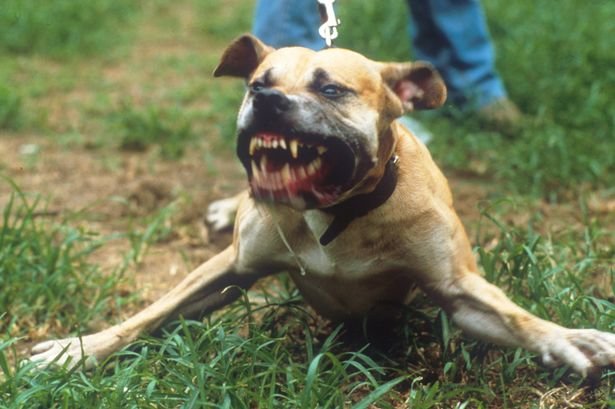
© Hulton ArchiveAmerican Pit Bulls are among the dogs banned in Britain
Nearly 2,000 children a year now need hospital treatment after being savaged by dogs .
The number has hit a record high despite tough new laws against devil-breed owners , after a series of horrific deaths.Among the mangled children rushed to A&E last year were 39 babies, 611 toddlers aged one to four and 528 children aged between five and nine.
The 1,733 traumatised kids were among 7,332 dog-attack victims needing hospital treatment, a Sunday People investigation has discovered.
That is double the amount from a decade ago, according to the Health and Social Care Information Centre.In one horrific case last June three-week-old Reggie Blacklin was killed by the family's pet Patterdale terrier at his home in Sunderland.
In 2014, 11-month-old Ava-Jayne Corless was mauled to death in her bed at a house in Blackburn, Lancs, by what is believed to be an American pitbull.
And in 2013, 14-year-old Jade Anderson died after suffering terrible injuries from head to toe when she was attacked by two bull mastiffs and two Staffordshire bull terriers while alone at a house in Wigan, Lancs.
Following a national outcry over Jade's death, the Dangerous Dogs' Act was extended to include attacks on private property.
It also raised the maximum jail sentence for those in charge of a killer dog from two years to 14. And last week the minimum sentence for a death was raised to six years.
But the number of victims continues to soar. There were 374 kids between 10 and 14 attacked last year, 62 aged 15, another 46 aged 16 and 73 17-year-olds.Experts blame the increase - most not involving banned breeds - on children being allowed to treat stressed dogs like cuddly teddy bears.
Owners who let their animal get frustrated by leaving it alone for hours or never walking it are also to blame.
Shockingly, social workers are being forced to take children into care to protect them from their family's dog because the authorities have no power to remove the animal if it is not on the banned list - pit bull terriers, Japanese Tosas and Argentine and Brazilian mastiffs.
The most children were taken into care in Derby, North Yorkshire and Knowsley, Merseyside.
These cases are likely to be the tip of the iceberg as most councils refused our Freedom of Information request on cost grounds.Claude Knights, chief executive of Kidscape , said: "The safety and well-being of children should be paramount. A dog known to pose a danger within a family home should be removed and dealt with by the appropriate authorities."
Karen Goodman, an experienced social worker and spokeswoman for the British Association of Social Workers, said: "We cannot remove the danger whatever it may be, and it is absolutely not our job to remove animals although we can recommend a child is removed for their safety.
"Dangerous dogs are also a problem for social workers and I have been bitten by dogs in my job and attended visits while being protected by police dog units."
Both charities, the Dogs Trust and the People's Dispensary for Sick Animals (PDSA) are campaigning to raise awareness of dangerous dogs and educate children on how to behave safely around the animals.

Reader Comments